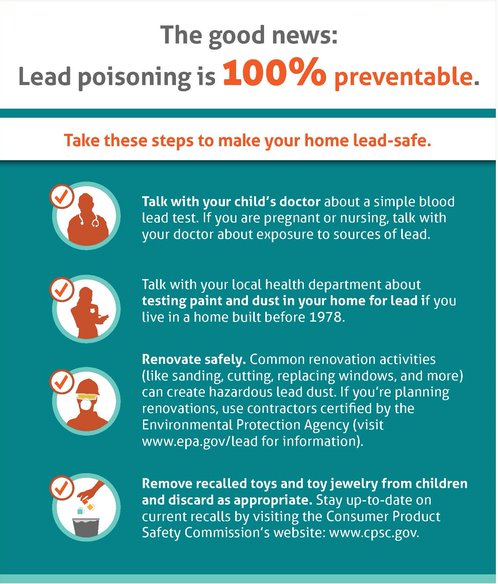18.2 Environmental Health
The environment is the air we breathe, the water we drink, the food we eat, and the places where we live, work, and play. There is a connection between the environment and the health of individuals and communities. An environmental health hazard is a substance or pathogen that has the ability to cause an adverse health event in individuals or communities. Examples of environmental hazards are air contaminants, toxic waste, radiation, disease-causing microorganisms and plants, pesticides, heavy metals, chemicals in consumer products, and extreme temperatures and weather events.[1]
Environmental health hazards can be divided into five main categories: housing, occupational, atmosphere, foodborne diseases, and waterborne diseases. View examples of environmental hazards by category in Table 18.2.
Table 18.2. Environmental Hazards
| Category | Environmental Hazards |
|---|---|
| Housing |
|
| Occupational |
|
| Atmosphere |
|
| Waterborne Illness
(Recreational or drinking water contaminated by disease-causing contaminants, microbes, or pathogens) |
|
| Foodborne Illness
(Consuming foods or beverages contaminated with bacteria, viruses, parasites, toxins, or chemicals) |
|
Recognizing environmental hazards can help community health nurses provide information to community members and implement prevention strategies that promote positive outcomes. See Figure 18.1[2] for an example of prevention strategies related to the environmental hazard of lead poisoning.

The American Nurses Association (ANA) established an Environmental Health standard defined as, “The registered nurse practices in a manner that advances environmental safety and health.”[3] Review the competencies for this standard in the following box.
ANA’s Environmental Health Competencies[4]
The registered nurse:
- Creates a safe and healthy workplace and professional practice environment
- Fosters a professional environment that does not tolerate abusive, destructive, and oppressive behaviors
- Promotes evidence-based practices to create a psychologically and physically safe environment
- Assesses the environment to identify and address the impact of social determinants of health on risk factors
- Reduces environmental health risks to self, colleagues, health care consumers, and the world
- Integrates environmental health concepts in practice
- Communicates information about environmental health risks and exposure risk strategies
- Advocates for the implementation of environmental health principles in communities in which they work and live
- Incorporates technologies to promote safe practice environments
- Uses products or treatments consistent with evidence-based practice to reduce environmental threats and hazards
- Examines how the health care consumer’s biography affects their biology, resultant health issues, and the ecosystem
- Analyzes the impacts of social, political, and economic influences on the human health experience and global environment
- Advances environmental concerns and complaints through advocacy and appropriate reporting mechanisms
- Promotes sustainable global environmental health policies and conditions that focus on prevention of hazards to people and the natural environment
Caring for individuals exposed to environmental hazards will be discussed in the following “Emergency Preparedness, Response, and Recovery” section.
Read more information about promoting environmental health and safety in nursing in the following box.
Read a free e-book titled Environmental Health in Nursing published by the Alliance of Nurses for Healthy Environments (ANHE).
Review the “Environmental Safety” section of the “Safety” chapter in Open RN Nursing Fundamentals, 2e.
- Centers for Disease Control and Prevention. (2024). About environmental public health tracking. https://www.cdc.gov/environmental-health-tracking/about/index.html ↵
- “preventable.jpg” by unknown author for National Center for Environmental Health, Division of Environmental Health Science and Practice is in the Public Domain. ↵
- American Nurses Association. (2021). Nursing: Scope and standards of practice (4th ed.). American Nurses Association. ↵
- American Nurses Association. (2021). Nursing: Scope and standards of practice (4th ed.). American Nurses Association. ↵

